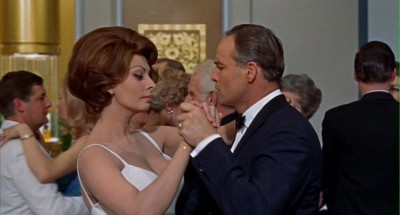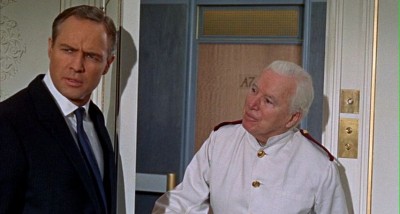
When Charles Chaplin’s A Countess from Hong Kong came out in 1967, it flopped at the box office and was written off as a complete failure from a “once great” filmmaker who had simply grown old and out of touch. It’s also worth remembering that it would be another five years before the U.S. “forgave” Chaplin for refusing to appear before the House Un-American Activities Committee and allowed him back into the country. In many minds, he was considered a “red.” (You’ll even find references to him as a communist and a Marxist in film books published after 1957.) That undoubtedly played into the film’s reception. The truth is that it’s actually a good movie — albeit a flawed one — that was out of keeping with the mood of the time. Its greatest sin, however, is probably that it’s not as good as the Chaplin films that came before it, but that’s hardly a crime. The real problem with the film is that it lacks Chaplin’s presence — apart from his cameo as “an old steward.” (That billing perhaps has a double meaning in the sense of Chaplin being responsible for caring for and preserving a type of filmmaking.) To make up for his absence in the film, he tried to elicit Chaplinesque performances from his stars. The idea works better with Sophia Loren than it does with Marlon Brando, but it sometimes works with both of them. The problem is that it doesn’t always work with either of them. Aspects of the story — especially as concerns Brando and his estranged wife (Tippi Hedren) — have more than a casual relationship to his previous film, A King in New York (1957). (That would have been lost on American viewers and critics in 1967, since A King in New York wouldn’t play here until 1973 — after being dismissed as an attack on America, which it isn’t.)

What we end up with is an unusually adult romantic comedy that looks a lot like a Hollywood film from the late 1950s or early ‘60s. The biggest difference being that romantic comedies of that era don’t tend to have love interests who are prostitutes, and if they do, you can be sure that the status quo and the sanctity of marriage will be upheld in the final reel. Not so with Chaplin. In that respect, he may have been ahead of his time, but that’s a minor concern in a film that’s largely played as a frantic bedroom farce. And for the most part, it works. The problem is that it’s Chaplin’s film and it’s hard not to realize how much better Chaplin could have played the material than his stars do. They do, however, make a game attempt that sometimes pays off. Chaplin and Brando may have been a bad mix, but the film ends up containing one of Brando’s more likable performances — even if Chaplin forced him into it against his will. Time has been surprisingly kind to A Countess from Hong Kong. It isn’t one of Chaplin’s great films, but its nothing to be ashamed of at all. Both the shipboard ball sequence and the climactic scene (both involving dance) are pure bliss, and Chaplin’s handling of the widescreen format and color are surprisingly assured.




Before you comment
The comments section is here to provide a platform for civil dialogue on the issues we face together as a local community. Xpress is committed to offering this platform for all voices, but when the tone of the discussion gets nasty or strays off topic, we believe many people choose not to participate. Xpress editors are determined to moderate comments to ensure a constructive interchange is maintained. All comments judged not to be in keeping with the spirit of civil discourse will be removed and repeat violators will be banned. See here for our terms of service. Thank you for being part of this effort to promote respectful discussion.